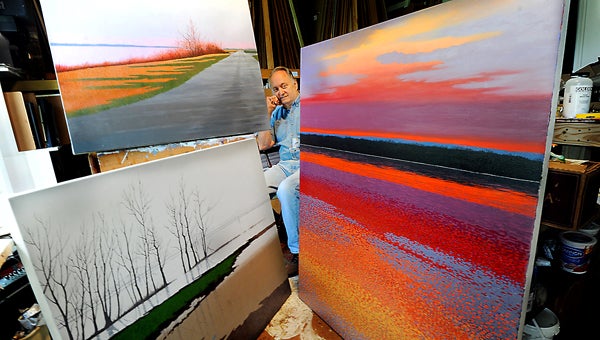Lessons for the future lie in our past
Published 12:37 am Friday, August 5, 2016
Sometimes the past is just as mysterious as the future.
Discovering what came before fascinates us as much as considering what lies ahead, especially when what is uncovered is the essence of who and why we are.
This was evidenced Monday when the capacity crowd in the Hotel Vue ballroom suddenly lurched forward toward the end of the evening’s Legends & Lore talk.
University of North Carolina professor of anthropology Vin Steponaitis had already wowed the crowd with his presentation of historical maps of Fort Rosalie. The lecture coincided with Wednesday’s dedication of the Natchez National Historical Park site.
Using a series of maps from 18th century map makers overlaid by 21st century laser topographic maps, Steponaitis had the full attention of the crowd as he documented with incredible precision what remains of the 1730 fort.
Even more incredible was how accurate and detailed 18th century cartographers were in an age without computers, aerial photographs and electricity. When overlaid by laser maps created with GPS and lasers beamed down to earth from airplanes, these 300 year-old maps of the river, landforms and buildings matched line-for-line in some cases.
Monday evening’s presentation presented with clarity what remains of the old 1730 fort on the newly dedicated site.
I hadn’t considered that most of the fort has since disappeared as the bluff has eroded away through the centuries. Now it makes sense, but it took seeing Steponaitis’ presentation to fully comprehend.
The images presented Monday night had the crowd silenced in deep study, many astonished to see this real and visible connection between the past and the present.
The atmosphere in the room was energized. Much of the crowd didn’t realize more fireworks were still to come.
With the same software used to create the hyper-realistic worlds of popular video games, one of Steponaitis’ graduate students combined the data derived from the 18th-century maps with the information collected from 21st-century laser maps and created a video of what Natchez might have looked like in the first days of the city’s history.
Like a hawk circling high above the ground, the camera provided a bird’s-eye flight across the landscape with images of the river, the landscape where downtown Natchez would be built and across the bluff and over Fort Rosalie. Smoke rising from chimneys and leaves on trees added to realistic visual effects. From the video screen the french fort was resurrected.
The room was silent until the video was complete.
It wasn’t Jurassic Park, the fictional island where dinosaurs are brought to life from tiny strands of ancient genetic material, but the video and the entire presentation provided new insight into the DNA of our community.
Much more is to be discovered about Fort Rosalie. With the help of Steponaitis’ research archaeologists are digging to find evidence of a settlement of African slaves the French used to help build the 1730 fort.
Director of the National Park Service Southeast Archeological Center said at the Fort Rosalie dedication, “Archeology isn’t just about the past, it’s about us here and now.”
As we learn more about Fort Rosalie and Natchez, we gain greater understanding of who we are, and, in a very real way, where we are headed. In that way, our past, present and future are inextricably linked.
Ben Hillyer is the news editor of The Natchez Democrat. He can be reached at 601-445-3540 or by email at ben.hillyer@natchezdemocrat.com



